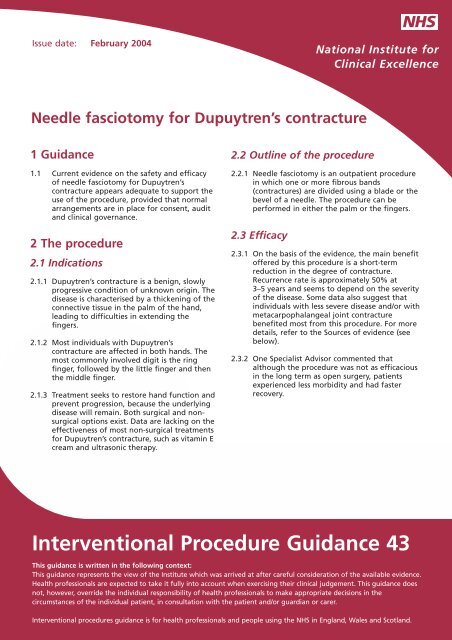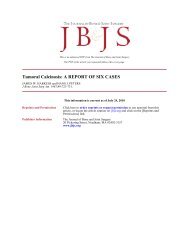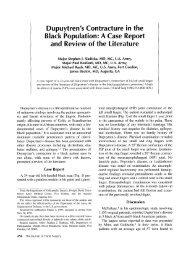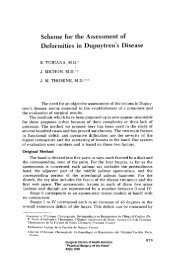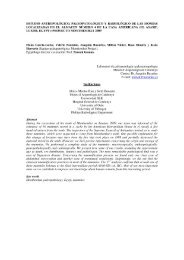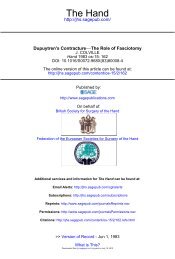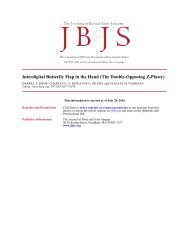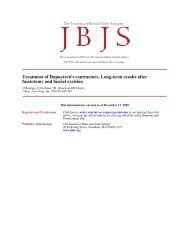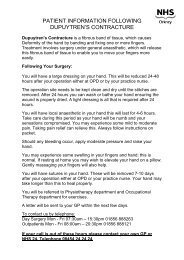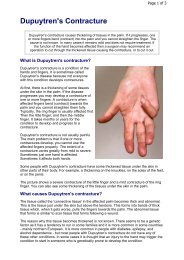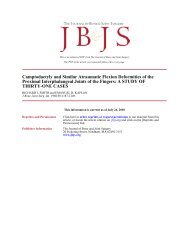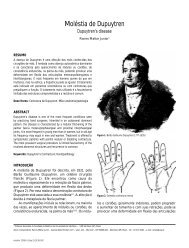IPG043 Needle fasciotomy for Dupuyren's contracture - guidance
IPG043 Needle fasciotomy for Dupuyren's contracture - guidance
IPG043 Needle fasciotomy for Dupuyren's contracture - guidance
- No tags were found...
You also want an ePaper? Increase the reach of your titles
YUMPU automatically turns print PDFs into web optimized ePapers that Google loves.
NHSIssue date: February 2004National Institute <strong>for</strong>Clinical Excellence<strong>Needle</strong> <strong>fasciotomy</strong> <strong>for</strong> Dupuytren’s <strong>contracture</strong>1 Guidance1.1 Current evidence on the safety and efficacyof needle <strong>fasciotomy</strong> <strong>for</strong> Dupuytren’s<strong>contracture</strong> appears adequate to support theuse of the procedure, provided that normalarrangements are in place <strong>for</strong> consent, auditand clinical governance.2 The procedure2.1 Indications2.1.1 Dupuytren’s <strong>contracture</strong> is a benign, slowlyprogressive condition of unknown origin. Thedisease is characterised by a thickening of theconnective tissue in the palm of the hand,leading to difficulties in extending thefingers.2.1.2 Most individuals with Dupuytren’s<strong>contracture</strong> are affected in both hands. Themost commonly involved digit is the ringfinger, followed by the little finger and thenthe middle finger.2.1.3 Treatment seeks to restore hand function andprevent progression, because the underlyingdisease will remain. Both surgical and nonsurgicaloptions exist. Data are lacking on theeffectiveness of most non-surgical treatments<strong>for</strong> Dupuytren’s <strong>contracture</strong>, such as vitamin Ecream and ultrasonic therapy.2.2 Outline of the procedure2.2.1 <strong>Needle</strong> <strong>fasciotomy</strong> is an outpatient procedurein which one or more fibrous bands(<strong>contracture</strong>s) are divided using a blade or thebevel of a needle. The procedure can beper<strong>for</strong>med in either the palm or the fingers.2.3 Efficacy2.3.1 On the basis of the evidence, the main benefitoffered by this procedure is a short-termreduction in the degree of <strong>contracture</strong>.Recurrence rate is approximately 50% at3–5 years and seems to depend on the severityof the disease. Some data also suggest thatindividuals with less severe disease and/or withmetacarpophalangeal joint <strong>contracture</strong>benefited most from this procedure. For moredetails, refer to the Sources of evidence (seebelow).2.3.2 One Specialist Advisor commented thatalthough the procedure was not as efficaciousin the long term as open surgery, patientsexperienced less morbidity and had fasterrecovery.Interventional Procedure Guidance 43This <strong>guidance</strong> is written in the following context:This <strong>guidance</strong> represents the view of the Institute which was arrived at after careful consideration of the available evidence.Health professionals are expected to take it fully into account when exercising their clinical judgement. This <strong>guidance</strong> doesnot, however, override the individual responsibility of health professionals to make appropriate decisions in thecircumstances of the individual patient, in consultation with the patient and/or guardian or carer.Interventional procedures <strong>guidance</strong> is <strong>for</strong> health professionals and people using the NHS in England, Wales and Scotland.


